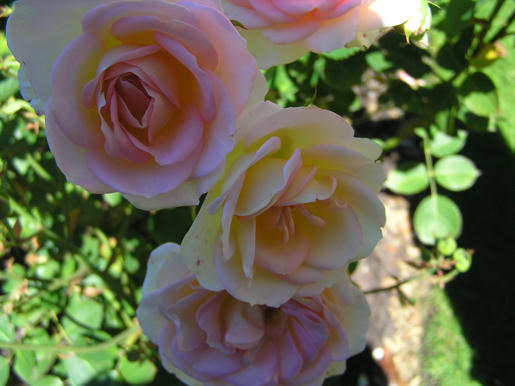Many people are now getting into growing all things organic. Farmers are doing it with produce and meats, so it is natural that you might want to grow your roses that way also. Many people have problems using the pesticides and insecticides that go along with growing roses and keeping them healthy. Well now you can use more natural methods of growing your roses. This section will show you how in a step by step method.
1. Each bush that you want to plant will need to have a foot of space all around it so that the flowers can get the proper amount of circulation. It also helps to prevent leaf diseases for your roses.
2. You will want to purchase organic roses. You will want to buy roses that have a sturdy green stem and no blemishes on them. Bare root roses are best for this.
3. Along with roses that have green stems, you will need to look for stems that have evenly spaced leaves that are close together.
4. You will need to use well drained soil so that you can promote the healthy growth that will give the flower all of the water and nutrients that it needs from the root to the flower’s head.
5. Fix the soil so that you can build organically. You should use a raised bead if drainage is a constant problem. Ask your local garden center rep about how best to fix your soil to be organically correct.
6. Soak your bare root roses in a large container of compost tea for many hours before you plant them.
7. You must mound up enough good organic sol that is mixed with an equal amount of compost in the middle so that you can spread the roots out and down from where they meet at the trunk.
8. Now, plant the rose at the point where the stem breaks into the root so that it is at soil level, or approximately 1 inch below the top level if you live in an area that is prone to hard winters.
9. You have to check your bare root roses first. If your roots grow out in a tight circle, you have to cut a straight slice down each of its four sides. A knife is good for this. Then you will dig a hole that is 2 inches deeper than the container and at least twice as wide.
10. Mix your organic soil garden soil with an equal amount of compost and use your hands to gently spread the roots into the soil mix.
11. You have to mulch to help you prevent your roses from being exposed to weeds, and water stress complications. It will also ensure that your roses remain at their lowest possible maintenance level.
12. You must feed your roses organically also. Fertilize with organic fertilizer and maintain a regular watering schedule.
13. Water your organic roses deep at the planting, and then once every week after that during growing season so that you can promote deep roots. Watering in the early morning is best.
14. You must cultivate the top inch of your soil around each of your roses and fertilize on a monthly basis with a balanced organic fertilizer. You will need a good granular type of fertilizer that you can work into the soil. Either that, or you can use a fish emulsion or seaweed based product that you can mix with water because it has all of the necessary nutrients that a healthy flower needs. Check the ingredients listed on the labels to ensure that they have nitrogen, phosphorus, potassium, iron and calcium.
15. To help protect your bed against the various types of pests and insects that can plague your roses, put sticky yellow bars every ten feet to catch them.
16. You may use an organic pesticide if the problem is bad.
17. If your pest problem is severe enough, you may use insecticidal soap to spray over your roses.
Now you have all of the necessary knowledge that you need to grow your own bed of earth friendly roses. Your flowers will be just as beautiful as those that are not grown organically, and will likely have the healthiest life span that a rose can get.
Organic roses have some of the best color and “immune systems” that a rose can have. The fragrance of them can’t be beaten. Of course, it still helps to know how to prevent your roses from being taken over by diseases. The next section will help you with that.
Kapas Island Resort, Pulau Kapas, Terengganu
11 years ago











